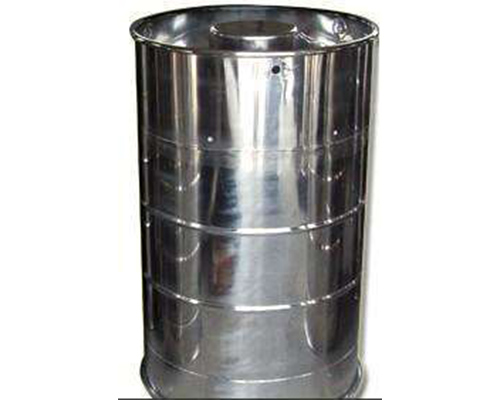
Yingkou Hengyang New Energy Chemical Co., Ltd.
Address: Xianren Island Energy and Chemical Zone, Yingkou City, Liaoning Province, via the west side of the Fourth Road
Zip code:115200
Telephone:18241754999
Fax:0417-6775999
E-mail:1313264@qq.com
Website:en.yingkouhengyang.com
Diethyl carbonate was summarized. Tanaka et al. improved the method by using CuCl2 and a complex formed by a compound of chlorohydrin salts which can form divalent copper with CuCl2 as catalysts. Tanaka et al. used sodium ethanol and copper chloride as catalysts to react at 100-150 C and 1-10 MPa. The molar ratio of carbon monoxide to oxygen was between 20-100. This method solves the problem of the efficiency of producing copper chlorohydride salt and improves the yield. The problem of catalyst blocking reactor and pipeline was solved. At the same time, relatively stable divalent copper ions were used. Kimura and others have also made in-depth research on the catalytic method of divalent copper ions. The reaction conditions of copper-based catalysts are mild, and the cost of the catalysts is low. However, the problem of short life and serious equipment corrosion still needs to be solved further. Separation and recycling of products and catalysts in liquid phase method need complex separation technology, which becomes the main disadvantage of this method. 3.2 In view of the shortcomings of liquid phase method, the synthesis of DEC by gas phase method has been carried out. Roh et al. studied the DEC yield under different conditions. It was found that when C0 was excessive, CuCl2/PdCl2/KOH catalyst supported on activated carbon had the best effect, and the selectivity of DEC could reach 100%. With the increase of residence time, the DEC yield increased, but the rate of increase slowed down; with the increase of temperature, the DEC yield increased. The yield of DEC increased with the increase of molar fraction of carbon monoxide. If ethanol was excessive, the yield of DEC decreased, while the yield of by-products increased and the selectivity decreased. Dunn et al. made a thorough study on this, and discussed the activity and selectivity of the catalyst and explained it. It is pointed out that the yield of DEC is increased by about 30% by the composite catalyst composed of PdCl2 and CuCl2, and chloride ion is an important component of the catalyst and plays a key role in the synthesis of DEC. Dunn suggested that chloride ion might act as a bridge between the reactant and copper ion, increasing the kinetic rate of electron transfer. It may also be that chloride ions change the potential of copper loaded on activated carbon surface; through blank experiments (according to adding C0 or not), it is concluded that the formation of by-products is a parallel reaction mechanism competing with the main reaction. The synthesis of DEC can also be carried out without the support of catalyst, but the yield of DEC can be increased by more than 30 times when the catalyst is loaded on activated carbon, and the yield of DEC can be increased by adding KOH without reducing the selectivity of DEC. As can be seen from Fig. 1, after adding metal alkali, DEC
The yield of 8 increased obviously, especially rib H. This may be due to the formation of 0H-C1 complex.
Roh et al. used pulse-quenching reactor to discuss whether copper-supported catalysts could be used in batch reactor to synthesize DEC under the same reaction conditions as DMC. Only methanol was replaced by ethanol to synthesize DEC. Using CuCl2/PdCl2 heterogeneous catalyst (supported on activated carbon), the yield of DEC was only 20% of DMC. The main by-products in the synthesis of DEC are ethanol and ethyl formate; the heterogeneous copper/PdN catalyst pretreated with metal alkaline compounds can greatly improve the selectivity of acetaldehyde and ethyl formate; Punnoose et al. found that when the copper/PdN catalyst was characterized by XRD and ESR, the selectivity of acetaldehyde and ethyl formate could be greatly improved. After pretreatment with alkali, the resulting catalyst contains at least two forms of copper, CuCl2 and Cu2 (0H) 3C1. This method uses cheap renewable resources carbon monoxide, ethanol (which can be prepared by biological method) and oxygen as reactants. Under mild conditions, the catalyst is immobilized for gas-phase reaction. The by-product of the reaction is harmless water, and the atomic economy of the reaction is 86.8%. The design of the reaction route is reasonable. The method has high selectivity for diethyl carbonate, but the yield is low. How to improve the yield of DEC while maintaining high selectivity has become an urgent problem to be solved. At the same time, the control of explosion limit is also very important because of the presence of oxygen in the reaction system. 3.3 Low Pressure Gas Phase Synthesis of Carbon Monoxide
9 Introducing ethyl nitrite as oxygen carrier in the synthesis of carbon monoxide of ethanol, C0 reacts with it to form DEC, and N0 reacts with ethanol and oxygen to form ethyl nitrite for recycling. This method was originally proposed by Japanese characters. Because the synthesis and regeneration reactions are carried out under atmospheric pressure or low pressure, it is also called C. 0 low pressure gas phase synthesis method.
